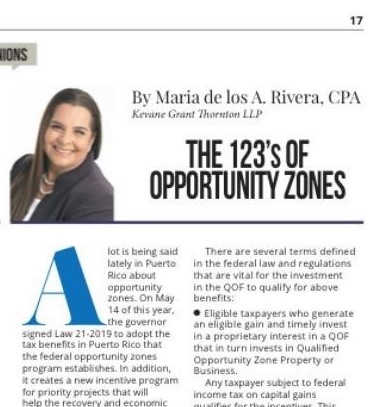-
Financial statements audits
Financial statement audits
-
Compliance audits
Compliance audits
-
Compilations and reviews
Compilations and audit
-
Agreed-upon procedures
Agreed-upon procedures
-
Corporate and business tax
Our trusted teams can prepare corporate tax files and ruling requests, support you with deferrals, accounting procedures and legitimate tax benefits.
-
International tax
Our teams have in-depth knowledge of the relationship between domestic and international tax laws.
-
Tax compliance
Business Tax
-
Individual taxes
Individual taxes
-
Estate and succession planning
Estate and succession planning
-
Global mobility services
Through our global organisation of member firms, we support both companies and individuals, providing insightful solutions to minimise the tax burden for both parties.
-
Sales and use tax and indirect taxes
SUT/ VAT & indirect taxes
-
Tax incentives program
Tax incentives program
-
Transfer Pricing Study
The laws surrounding transfer pricing are becoming ever more complex, as tax affairs of multinational companies are facing scrutiny from media, regulators and the public
-
Business consulting
Our business consulting services can help you improve your operational performance and productivity, adding value throughout your growth life cycle.
-
Forensic and investigative services
At Grant Thornton, we have a wealth of knowledge in forensic services and can support you with issues such as dispute resolution, fraud and insurance claims.
-
Fraud and investigations
The commercial landscape is changing fast. An ever more regulated environment means organizations today must adopt stringent governance and compliance processes. As business has become global, organizations need to adapt to deal with multi-jurisdictional investigations, litigation, and dispute resolution, address the threat of cyber-attack and at the same time protect the organization’s value.
-
Dispute resolutions
Our independent experts are experienced in advising on civil and criminal matters involving contract breaches, partnership disputes, auditor negligence, shareholder disputes and company valuations, disputes for corporates, the public sector and individuals. We act in all forms of dispute resolution, including litigation, arbitration, and mediation.
-
Business risk services
We can help you identify, understand and manage potential risks to safeguard your business and comply with regulatory requirements.
-
Internal audit
We work with our clients to assess their corporate level risk, identify areas of greatest risk and develop appropriate work plans and audit programs to mitigate these risks.
-
Service organization reports
As a service organization, you know how important it is to produce a report for your customers and their auditors that instills confidence and enhances their trust in your services. Grant Thornton Advisory professionals can help you determine which report(s) will satisfy your customers’ needs and provide relevant information to your customers and customers’ auditors that will be a business benefit to you.
-
Transaction advisory services
Transactions are significant events in the life of a business – a successful deal that can have a lasting impact on the future shape of the organizations involved. Because the stakes are high for both buyers and sellers, experience, determination and pragmatism are required to bring deals safely through to conclusion.
-
Mergers and acquisitions
Globalization and company growth ambitions are driving an increase in M&A activity worldwide as businesses look to establish a footprint in countries beyond their own. Even within their own regions, many businesses feel the pressure to acquire in order to establish a strategic presence in new markets, such as those being created by rapid technological innovation.
-
Valuations
We can support you throughout the transaction process – helping achieve the best possible outcome at the point of the transaction and in the longer term.
-
Recovery and reorganization
We provide a wide range of services to recovery and reorganisation professionals, companies and their stakeholders.
Opinions, The Weekly Journal
The primary purpose of the Opportunity Zones program is to attract investment to designated areas. Therefore, Qualified Opportunity Funds (”QOF”) must maintain at least 90% of the assets contributed by investors in qualified opportunity zone property (“QOZP”). QOZP is defined as:
- shares of corporations, issued after December 31, 2017, operating a business in the area,
- participations on partnerships, issued after December 31, 2017, operating a business in the area or
- in tangible property used in a business operating in the area.Today we will discuss the requirements established by federal regulations for a business to qualify as a business in the area. Remember, we need to understand the concepts established at the federal level as they serve as the basis for local incentives.
The first requirement that the business has to meet is, to be an active business. For these purposes, the rent of property will also be considered an active business. However, leases known as “triple net leases” where the tenant is responsible for all costs (insurance, maintenance and taxes) related to the property in addition to the rent, are not considered a active business. Once we determine that the business conducts an active business, it must meet the following requirements:
- not considered a “sin business”,
- the business meets the following tests: at least 50% of its gross income is generated in a QOZ at least 40% of intangible assets are used in a QOZless tan 5% of its assets are non qualified financial assets, and
- substantially all (70%) of the tangible property owned or leased by the trade or business is QOZBP
The activity carried out by the business cannot be one of the following, known as sin businesses:
- public or private golf course
- country club
- massage parlor
- hot tub facilities
- tanning facilities
- racetracks or betting facilities
- selling alcoholic beverages for consumption outside the business.
To satisfy the rule of generating at least 50% of gross income from an active business in an area, you can use one of the following tests:
- at least 50% of the hours related to the services provided by the business are incurred in an area,
- at least 50% of the fees paid for services for the business are performed in an area,
- the assets of the business located in the area and the management or operational functions carried out in the area are necessary to generate
- at least 50% of the gross income of the business, or
- based on the facts and circumstances, at least 50% of the business is generated from a commercial activity in an area.
An important exception to the financial assets rule (investments, bonds, etc.) is that the business can maintain a reasonable amount of working capital (cash or investments with terms of 18 months or less) as long as the business has a formal plan to use them within 31 months of their contribution to the business.
The following are the requirements for the assets to constitute qualified property:
- property purchased from an unrelated person after 12/31/2017,
- property leased from an unrelated person after 12/31/2017, or from a related person at arm’s length market rates,
- original use of the property commences with the QOF or when the QOF substantially improves the property, and
- during substantially all (90%) of the QOF’s holding period of the tangible property, substantially all (70%) of the use of the tangible property was in a QOZ
Original use is determined when the property is put into service for the first-time for depreciation or amortization purposes within a zone. A property that has been used outside the area qualifies for original use in the area if it meets the rest of the requirements (e.g. purchased after 12/31/17). If the property has been unused or vacant for at least 5 years, it will be treated as original use when purchased by the qualified business or the QOF. If the property has been used within the area previously but it hasn’t been vacant for at least 5 years, it could be considered a qualified property if the business or the fund perform substantial improvements within 30 months of acquisition. Improvements should be at least in an amount similar to the cost of the property without including land.


